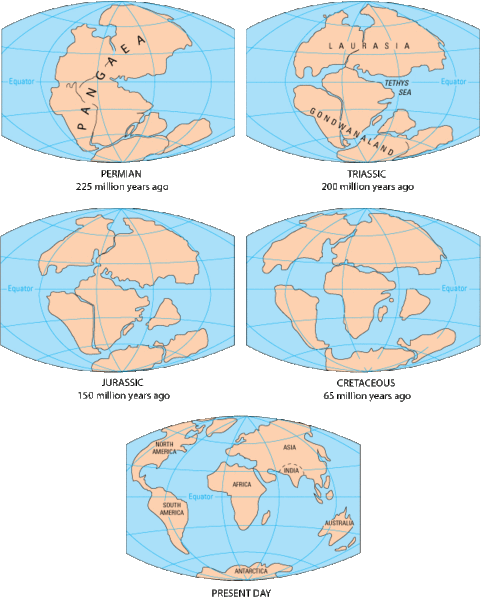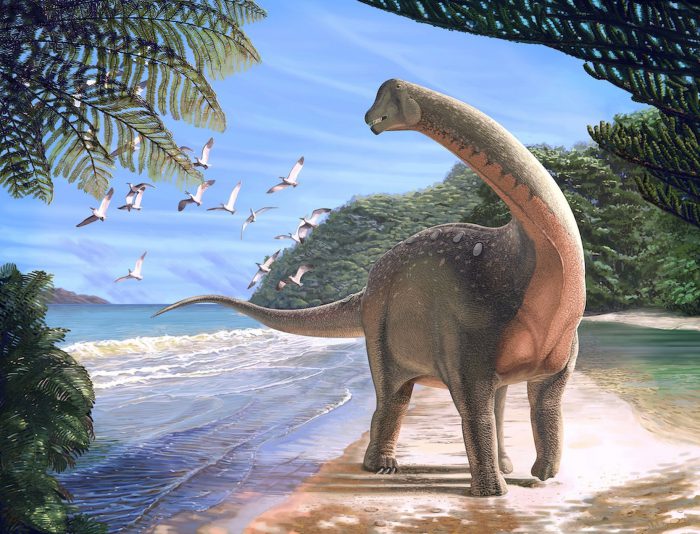If China just can't seem to stop finding prehistoric fossils, and Alberta has always been a dinosaur hot bed, Africa has been the opposite. Dinosaur fossils are extremely rare on the continent.
It's not because dinosaurs never existed there. No way. It's just that so much of the continent is covered in lush forests, that finding such animal artifacts is very difficult. Paleontologists need exposed rock to make these discoveries.
That's why scientists around the world are super-excited about a brand new Egyptian find—fossils of an African sauropod, Mansourasaurus shahinae!
A rare find
The Mansourasaurus (say man-SOO-rah-SAW-rhus) lived about 80 million years ago and was about the size of a school bus. This sounds big, but for a sauropod, or long-necked dinosaur, it's actually fairly small. In South America, for example, Argentinosaurus or Futalognkosaurus were far longer and many times heavier than Mansourasaurus.
But in this case, size doesn't relate to the impact of this rare find. Not only is it a North African fossil, it comes from the late Cretaceous period (between 100 million and 66 million years ago). This makes it an intriguing puzzle piece for paleontologists.
Isolated evolution

This diagram is an estimation of how Pangaea broke up over time. (Wikimedia Commons)
During the eras before the dinosaurs — the Permian — the world had a single landmass known as Pangaea. This supercontinent began to slowly split apart during the Triassic and Jurassic era, eventually becoming the separate continents that we know today. But even during the Cretaceous, some continents were still joined together. One of the biggest questions for modern researchers is when exactly did Africa split off from the rest of the other continents? And one of the best ways of knowing this?
Paleontology. Here's how.
During the Triassic and Jurassic era, animals were free to roam all across the giant Pangaea. The same fossils from that time period are found all over the world. But as the continental drift began in the Cretaceous, animal species became isolated, or separated, from one another. Finding themselves in different locations, they evolved into unique species. It's why North American Cretaceous fossils are so different from South American or Chinese ones. The continents had long since split by then.
European connection?
By studying African fossils, scientists hope to know when Africa made its own big break from the rest of the world. In the case of Mansourasaurus, this species has much more in common with fossils found in Europe than those in South America, or even Southern Africa. Does this mean that Africa was still connected to Europe when Mansourasaurus was alive?
More research is needed to know for sure. Hopefully this long-necked character is only the start of many more discoveries to come in Africa!
 An artist's painting of the Mansourasaurus walking along the seashore. (Andrew McAfee/Carnegie Museum of Natural History)
An artist's painting of the Mansourasaurus walking along the seashore. (Andrew McAfee/Carnegie Museum of Natural History)










Its amazing that all the continents were together once 🙂 .
YA!!!!!
This is SOOOOOOOOO amazing and SOOOOOOOOOOOOOOOOOOOOOOOOOOOOOOOOOOOOOOOOOOOOOOOOOOOOOOOOOOOOOOOOOOOO MYSTERY
This is soooo very strange
Hi Jacob that dinosaur is so awesome!!!!!!!!!!! 😆